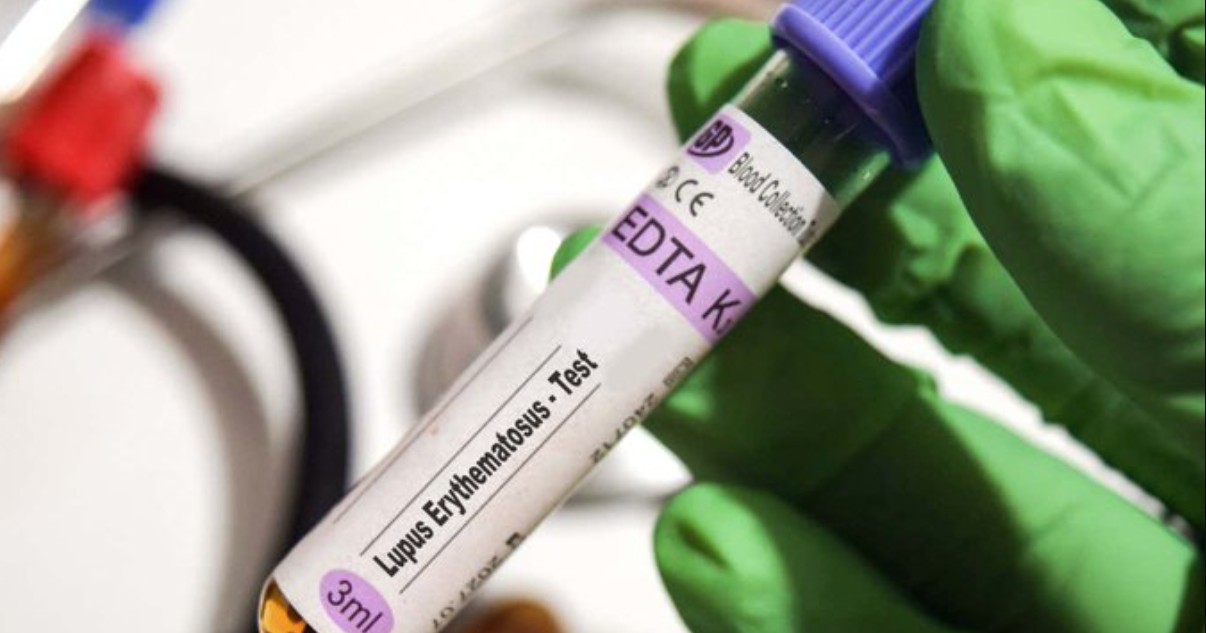How a common virus may trigger lupus: New insights into the role of Epstein–Barr virus

Groundbreaking study uncovers how the common Epstein–Barr virus hijacks immune cells, potentially triggering lupus and other autoimmune diseases in susceptible individuals.
A groundbreaking study has shed new light on the longstanding mystery of what triggers systemic lupus erythematosus (SLE), commonly known as lupus.
Researchers have reaffirmed that the Epstein–Barr virus (EBV)—the pathogen responsible for mononucleosis, often called the "kissing disease"—can directly infect and reprogramme specific immune cells, potentially setting off the chain of events that leads to this chronic autoimmune disease.
Lupus is a complex condition in which the body's immune system mistakenly attacks its own tissues, causing inflammation, organ damage, and a wide range of symptoms, including fatigue, joint pain, skin rashes, and kidney problems.
Incidence rates
Globally, lupus affects an estimated 5 million people, with incidence rates varying between 20 and 70 cases per 100,000 individuals depending on region, ethnicity, and access to healthcare.
In Kenya, lupus is diagnosed less frequently, but available studies suggest a prevalence of approximately 4–8 cases per 100,000 people. These numbers may underestimate the true burden, however, as improvements in diagnostic tools and awareness have led to increased detection in recent years.
EBV is one of the most common viruses in humans, with nearly everyone infected at some point, often experiencing mild or unnoticed symptoms.
Despite its prevalence, EBV rarely causes long-term health problems in most individuals. Scientists have now discovered, however, that in people with lupus, EBV behaves differently.
Typically, fewer than one in 10,000 B cells—an essential type of immune cell—carries the virus. In lupus patients, roughly one in 400 B cells is infected. This significant increase suggests that EBV may actively contribute to the disease rather than being a mere bystander.
B cells carrying EBV
The researchers focused on B cells carrying EBV and discovered that these cells produce a viral protein called EBNA2. This protein acts like a molecular switch, activating certain genes in human cells that are usually dormant. When these genes turn on, the B cells become highly active and start sending strong signals to other parts of the immune system. Essentially, EBV hijacks these B cells, converting them into powerful stimulators of immune responses.
Once these EBV-infected B cells activate helper T cells—a key component of the immune system—the T cells, in turn, recruit other B cells and immune cells that normally would not attack the body's own tissues.
This triggers a cascade effect, causing the immune system to become overactive and attack the body's own cells, particularly components in the cell nuclei. Interestingly, most B cells involved in this autoimmune response are not infected with EBV themselves. Instead, the infected B cells act as "drivers," initiating the autoimmune process and explaining why lupus patients can have widespread immune activity even though only a small fraction of B cells carry the virus.
The study's findings may extend beyond lupus.
EBV has long been associated with other autoimmune conditions, including multiple sclerosis, rheumatoid arthritis, and Crohn's disease. In these disorders, EBV-infected B cells may similarly act as triggers, initiating immune cascades that attack the body's own tissues.
Therapies
By understanding this mechanism, scientists can explore therapies that target EBV-infected B cells, potentially addressing the root cause of multiple autoimmune diseases rather than just alleviating symptoms.
Despite EBV infection being nearly universal, only some individuals develop lupus. This indicates that additional factors—such as genetics, variations in immune system function, or differences in the viral strain—likely influence susceptibility.
Researchers are now investigating why certain B cells become "driver" cells in some people but not in others, a discovery that could be key to preventing the disease.
Understanding how EBV triggers lupus opens the door to a new generation of treatments and preventive strategies. Potential approaches include therapies that specifically eliminate EBV-infected B cells or vaccines that prevent EBV infection altogether. Unlike current lupus treatments, which primarily manage symptoms, these strategies aim to target the underlying cause of the disease.
This study represents a major breakthrough in understanding the complex interplay between viral infection, genetics, and the immune system in autoimmune diseases. It shows that a common virus, long thought to be harmless in most people, can hijack immune cells and initiate a chain reaction that leads to lupus in susceptible individuals.
More effective treatments
By uncovering the mechanisms behind this process, researchers hope to develop more effective treatments and preventive measures for lupus and other EBV-linked autoimmune conditions, offering hope for millions of patients worldwide.
Lupus can affect many parts of the body, often presenting with a wide variety of symptoms. People with lupus frequently experience persistent fatigue and unexplained fevers, making everyday activities exhausting. Joint pain, stiffness, and swelling are common, often resembling arthritis, and can affect the hands, wrists, and knees.
Many patients develop a distinctive "butterfly-shaped" rash across the cheeks and bridge of the nose, and their skin may become highly sensitive to sunlight, causing rashes to flare after exposure.
Some individuals notice that their fingers or toes change colour, turning white or blue in response to cold or stress—a condition known as Raynaud's phenomenon.
Lupus can also affect internal organs: inflammation in the lungs may lead to chest pain or difficulty breathing, while the heart or kidneys may also be involved, potentially causing serious complications.
Hair thinning or hair loss, mouth ulcers, headaches, and cognitive difficulties such as memory lapses or confusion are other common signs.
Symptoms of lupus often come and go, with periods of flare-ups followed by times of relative calm. Because lupus affects each person differently, the combination, severity, and timing of symptoms can vary widely, making the disease challenging to recognise and diagnose.
Top Stories Today













































